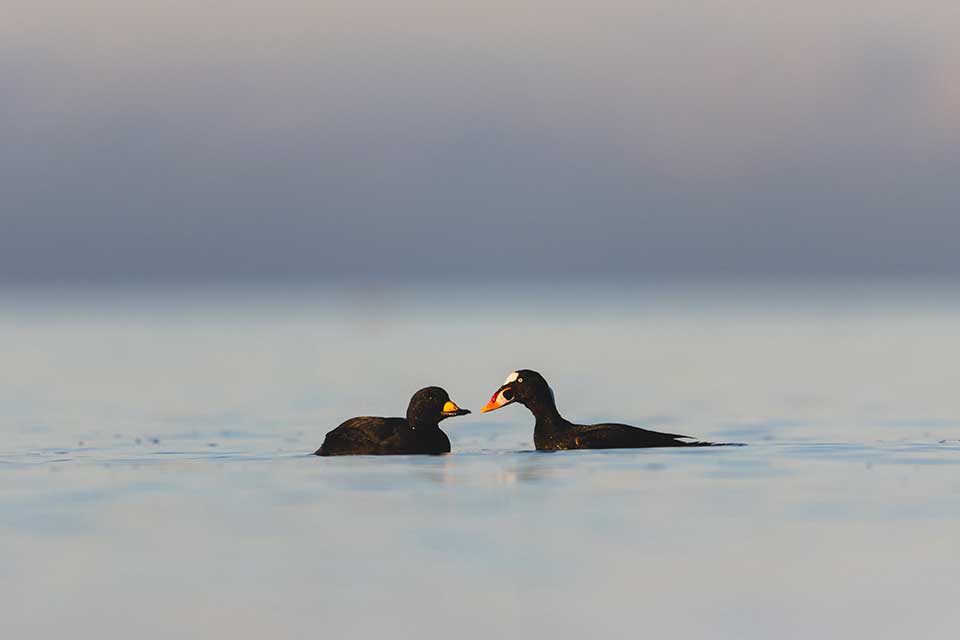SDJV103 Interim Report FY08
SDJV103 Final Report a
SDJV103 Final Report b
Sea Duck Migration Monitoring – Point Lepreau Bird Observatory

Project Number: 103
Year Funded: 2008
Lead Institution(s): Saint John Naturalists Club
Project Lead: Jim Wilson
Collaborator(s):
Location: New Brunswick
Focal Species: Common Eider (Somateria mollissima), Black Scoter (Melanitta americana), Surf Scoter (Melanitta perspicillata)
Project Description: The Point Lepreau Bird Observatory (PLBO), a project of the Saint John Naturalists’ Club, had been monitoring spring migration of sea ducks annually through the Bay of Fundy for the previous 12 years to assess population trends. It amassed a significant amount of migration data on several key sea duck species and wanted to continue in 2008. In spring the Bay funnels a significant proportion of the East Coast populations of Black and Surf Scoter and Common Eider (S. m.dresseri and S. m. borealis) past Point Lepreau. Objectives of this project were: 1. Share the migration data with scientists studying and managing scoters and the other sea duck species. The detailed information will help indicate whether Black and Surf Scoters, Common Eiders, Eastern Harlequin, and other sea duck populations are recovering, stable or declining, and contribute to an estimate of overall Eastern population levels. 2. Identify periods of peak migration in the Bay of Fundy and what species and numbers of seabirds are involved and educate local oil management at the large Irving refinery in Saint John about the threat to seabirds posed by oil spills.
Project Reports:
